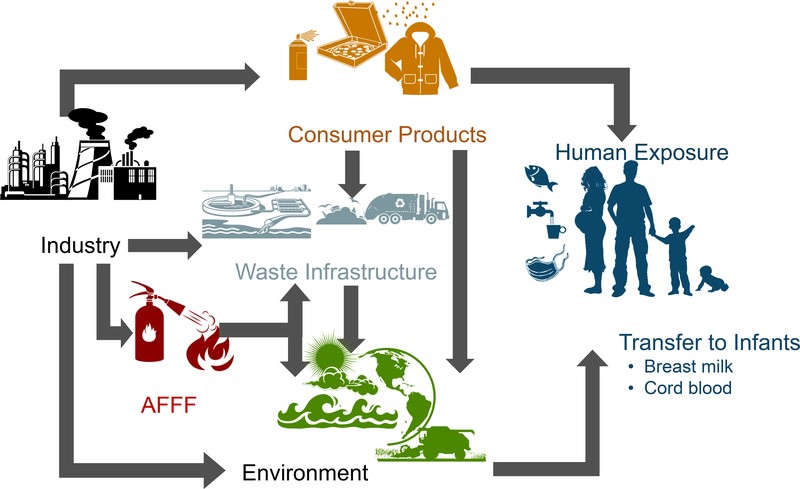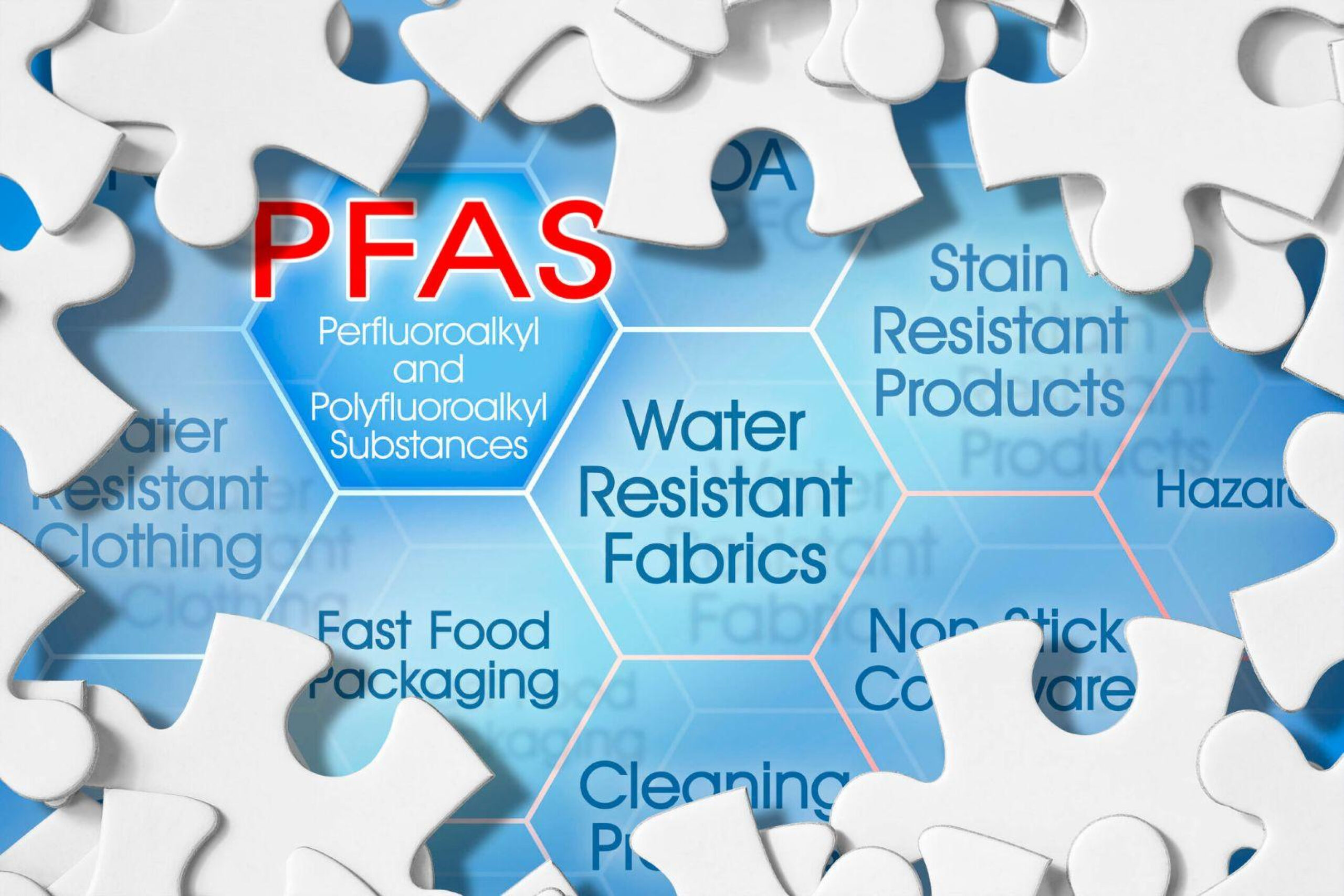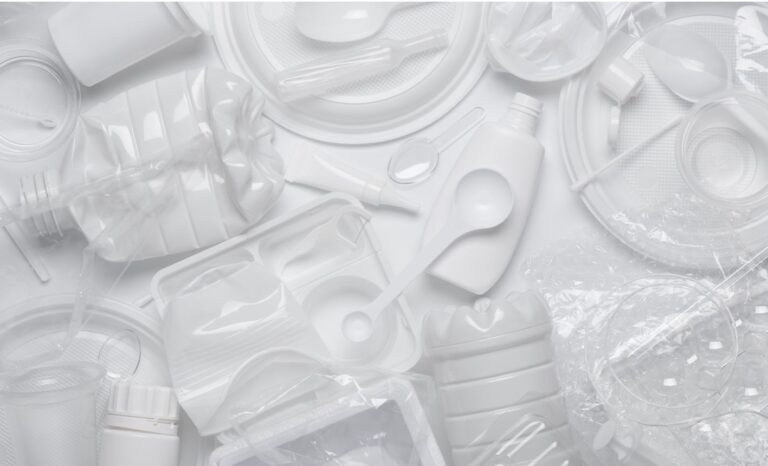PFAS Testing: Unveiling Hidden Threats for a Safer Tomorrow
Summary:
- PFAS, synthetic chemicals used since the 1940s, are present in everyday items like food packaging and electronics due to their water-repellent properties.
- They persist in the environment, contaminating air, water, and soil posing significant challenges for management.
- Exposure to PFAS is linked to various health issues in humans and animals, prompting regulatory action.
- Regulatory bodies, such as the European Commission, have set limits on PFAS levels in food and water.
- Envirocare Labs offers comprehensive testing services to ensure compliance and protect public health and the environment.
Per- and Polyfluoroalkyl Substances (PFAS) have gathered significant attention in recent years due to their widespread presence in various products and environments and their potential health and environmental impacts.
What Are PFAS?
PFAS are a group of man-made chemicals that have been used in a wide range of industries since the 1940s. They are valued for repelling water, oil, and grease, making them useful in non-stick cookware, food packaging, firefighting foams, and textiles. However, their persistence in the environment and potential health risks have raised concerns. PFAS molecules have a chain of linked carbon and fluorine atoms. Because the carbon-fluorine bond is one of the strongest, these chemicals do not degrade quickly in the environment.
PFAS compounds encompass various chemicals, including perfluorooctanoic acid (PFOA), perfluorooctanesulfonic acid (PFOS), and many others, each with its distinct chemical structure and properties.
What are PFAS used in?
PFAS are used in a wide range of consumer products due to their ability to repel both grease and water, including:
- In paper and cardboard food packaging (e.g., takeaway containers, popcorn bags, pizza boxes, ready-made cakes, etc.)
- In non-stick cookware
- Textiles (e.g., waterproof outdoor clothing and equipment, carpets, mattresses, etc.)
- In cosmetics (e.g., hair conditioner, foundation cream, sunscreen, etc.)
- In electronics (e.g., smartphones)
Environmental Fate and Persistence
One of the most concerning aspects of PFAS is their persistence in the environment. These chemicals do not readily degrade under natural conditions, leading to their accumulation in air, water, soil, and biota over time. PFAS contamination has been detected in diverse environmental matrices, including groundwater, surface water, sediments, wildlife, and remote regions such as the Arctic. The widespread distribution of PFAS poses significant challenges for environmental management and remediation efforts.
Health Effects and Public Health Concerns
Research has linked PFAS exposure to a range of adverse health effects in humans and wildlife. These effects include developmental disorders, immune system dysfunction, liver damage, thyroid disorders, reproductive issues, and certain types of cancer. Moreover, PFAS can bioaccumulate in the food chain, leading to potential human exposure through contaminated drinking water, food, and consumer products. The cumulative evidence of PFAS toxicity has raised public health concerns and prompted regulatory agencies worldwide to take action.
Human exposure pathways

Overview of PFAS exposure pathways for different human populations outside of occupational settings.
Source: https://www.ncbi.nlm.nih.gov/pmc/articles/PMC6380916/
Human exposure to PFASs occurs through various pathways, including ingesting contaminated drinking water and seafood, inhaling indoor air, and contacting other contaminated media. PFASs are commonly utilized for their non-stick properties and surface-tension-lowering effects, making them valuable for repelling oil and water to prevent stains and alter surface chemistry.
These applications extend to aqueous film-forming foams (AFFF), processing aids for fluoropolymer manufacture, metal plating, and semiconductor production. While direct exposures from product use can be mitigated through shifts in chemical production, exposures stemming from PFAS accumulation in the ocean, marine food chains, and AFFF contamination of groundwater persist over extended periods.
Regulations:
The European Commission has implemented Regulation (EC) No 2022/2388, enacted on December 7th, 2022, to regulate Per- and Polyfluoroalkyl Substances (PFAS) in food and water. This regulation sets stringent maximum levels for PFAS in certain foods of animal origin, outlined in Section 10 of Annex to Regulation (EC) No 1881/2006. These maximum levels, measured in micrograms per kilogram of wet weight, specify permissible concentrations of PFAS compounds like PFOS, PFOA, PFNA, and PFHxS in eggs, fishery products, meat, and edible offal.
For example, in eggs, the maximum level for PFOS is set at 1.0 μg/kg wet weight; for PFOA, it stands at 0.30 μg/kg wet weight. Similarly, various categories of fishery products have distinct maximum levels, reflecting the diverse nature of PFAS contamination across food sources.
Directive (EU) 2020/2184, enacted on December 16th, 2020, further addresses PFAS in drinking water. Under this directive, 20 PFAS molecules are identified, and the sum of PFAS in drinking water must not exceed 0.1 μg/liter. This stringent limit underscores the gravity of PFAS contamination in water sources, emphasizing the importance of upholding water quality standards to safeguard public health.
Why choose us?
Envirocare Labs leads the way in PFAS testing and analysis, boasting validated methods that accurately detect a wide range of PFAS compounds. Our cutting-edge facilities, staffed with experienced technicians and scientists, ensure the delivery of precise and reliable results.
Envirocare Labs has developed and validated testing methods for detecting four PFAS compounds in foods of animal origin, including marine and aquaculture products. Additionally, we offer analysis for 20 PFAS compounds in drinking water, following EU Commission regulations and directives. Our approach utilizes liquid chromatography coupled with triple quadrupole mass spectrometry, ensuring accurate and compliant results for the safety of consumers and the environment.
Envirocare Labs offers testing services for a comprehensive list of PFAS compounds, including:
| 1. Perfluorooctane sulfonic acid (PFOS) | 11. Perfluorododecanoic acid (PFDoDA) |
| 2. Perfluorooctanoic acid (PFOA) | 12. Perfluorotridecanoic acid (PFTrDA) |
| 3. Perfluorononanoic acid (PFNA) | 13. Perfluorobutane sulfonic acid (PFBS) |
| 4. Perfluorohexane sulfonic acid (PFHxS) | 14. Perfluoropentane sulfonic acid (PFPS) |
| 5. Perfluorobutanoic acid (PFBA) | 15. Perfluoroheptane sulfonic acid (PFHpS) |
| 6. Perfluoropentanoic acid (PFPA) | 16. Perfluorononane sulfonic acid (PFNS) |
| 7. Perfluorohexanoic acid (PFHxA) | 17. Perfluorodecane sulfonic acid (PFDS) |
| 8. Perfluoroheptanoic acid (PFHpA) | 18. Perfluoroundecane sulfonic acid |
| 9. Perfluorodecanoic acid (PFDA) | 19. Perfluorododecane sulfonic acid |
| 10. Perfluoroundecanoic acid (PFUnDA) | 20. Perfluorotridecane sulfonic acid |
Choose Envirocare Labs for unmatched expertise in PFAS testing and analysis, and partner with us in our commitment to safeguarding public health and the environment.
References:







